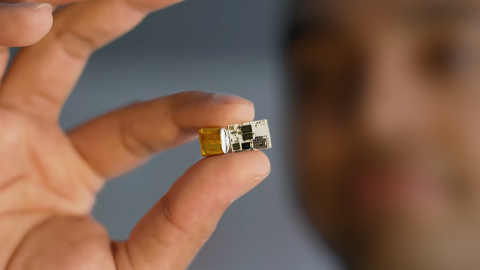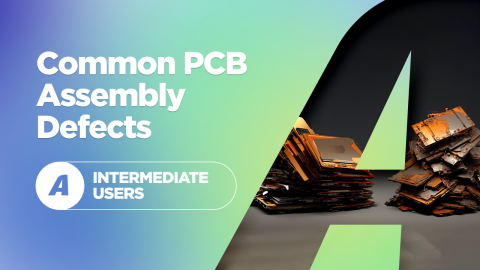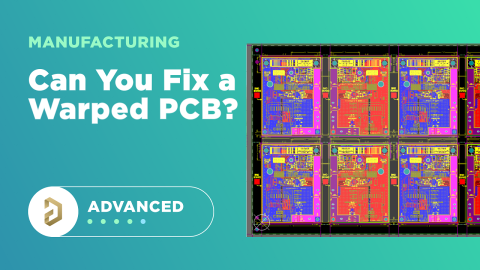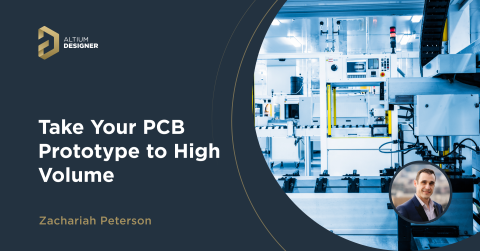Pros and Cons of Having a Manufacturer Source Components for Your PCB Design

When it comes time to manufacture your PCBs, the boards will end up in assembly and parts will need to be sourced for the upcoming build. Of course, you’ll procure parts from distributors or directly from component manufacturers. Someone has to take responsibility for these purchases, and designers often see it as their responsibility to take ownership of sourcing.
It is generally a good idea for a designer to be aware of where their components can be purchased. At minimum, this avoids an inventory disruption. But there are two instances where the designer may not be responsible for handling sourcing or directing a buyer in their company to make purchases:
- Turnkey manufacturing and assembly with prototypes or low volume
- Scaling to moderate volume production with an EMS provider
There are some advantages and disadvantages to allowing either type of company to source your components for you. Here's what you should consider.
The Difference Between Consignment Versus Turnkey
PCB assembly companies can provide sourcing and receive inventory under two models: consignment and turnkey. Under the consignment model, the customer is responsible for sourcing their own components and coordinating on-time delivery to the assembly facility. That means the customer incurs the cost, takes time to look through distributor inventories, place orders, select shipping times, and finds replacements when a desired part is out of stock. If parts kits arrive late at the assembly facility, then the customer is responsible for any schedule delays.
Manufacturers will also procure parts for assembly under a turnkey model. This is usually a service level where the manufacturer provides everything needed to get a completed assembly to a customer:
- Fabricated and tested PCBs
- Soldered and cleaned PCBAs
- Spare parts and assemblies in packaging
The idea behind turnkey manufacturing is that the customer does not have to deal with any of the logistics or management needed to coordinate the manufacturing order, including parts purchases. They get to sit back and sip coffee while the staff at the manufacturer does all the leg work.

So obviously, there should be some risks associated with going completely hands off and selecting turnkey production. Peace of mind always comes with a trade-off, whether it's cost or risk that the assembly ends up being incorrect.
Risks of Consignment
If you're a fan of consignment, then you're probably a control freak or you are ultra budget-conscious. With consigned sourcing, you are in total control of the parts that are being procured and where they are procured, as well as shipping timelines and the costs associated with all of the above.
This is also faster if parts are out of stock when ordering: you won't have to wait for emails back and forth from the manufacturer inquiring about replacement approvals. Instead, you can leverage your sourcing tools or parts recommendations on distributor sites to quickly select replacements. Whenever replacements are selected during purchasing, make sure you document these replacements in a copy of your BOM and send an update to the assembler.
The biggest risk of consignment is delays in your schedule. Having to take time to create orders, coordinate shipping, track packaging, select replacements, and supply updated BOMs to the assembler all takes time. If you’re cavalier about scheduling, then you just might miss your ship date.
Risks of Turnkey
Turnkey sourcing is for the engineer who does not have the time or inclination to manage all the purchasing decisions. The benefit to you as an engineer is that the assembler will coordinate all the orders for your parts and their shipping dates tend to be much more reliable. Unfortunately, convenience comes at a price, and the word “price” here is being used literally. There are multiple risks that ultimately create a financial risk for your product:
- Assemblers might apply a markup to your parts costs, and with some assemblers that markup can be up to 100%
- Overseas assemblers might change your BOM and not tell you about it, and don't expect to see any cost savings passed on to you
- You don't always know where the parts are being purchased; the assembler might be purchasing from a shady gray market broker
- Assemblers always over-purchase to account for attrition, but in turnkey they may not ship you those extra parts, but you will still foot the bill for attrition
Given these potential problems, you might be better off consigning parts yourself, especially if you're planning to produce overseas. Eating the extra shipping costs is worth eliminating the risk of counterfeits in your assemblies.
Is There a Middle Ground?
There definitely is a middle ground between turnkey and consignment. What I prefer is to procure the most important parts myself once they are locked into the BOM. The remaining components, which are very low risk and have many replacements, can be sourced by the assembler.
Some assembly houses have online platforms that allow you to select which parts you will consign and which the assembler can order. At that point, any markup can be minimal as the most expensive and most important parts have already been procured by you, and the savings more than offsets the shipping cost.
|
Sourcing Approach |
Pros and Cons |
|
Consignment |
|
|
Turnkey |
|
When you go to high volume, you will most likely be obtaining from the component manufacturer directly, especially for your most important parts. In that case, you will have no choice but to work with your EMS company under a mixed model. With scale comes additional attention to sourcing location and logistics, so make sure you have tracking processes in place before you go this route.
Thankfully, you don’t have to guess at the sources for your components when you use the ActiveBOM feature and supply chain tools in Altium Designer®. To implement collaboration in today’s cross-disciplinary environment, innovative companies are using the Altium 365™ platform to easily share design data and put projects into manufacturing.
We have only scratched the surface of what’s possible with Altium Designer on Altium 365. Start your free trial of Altium Designer + Altium 365 today.











